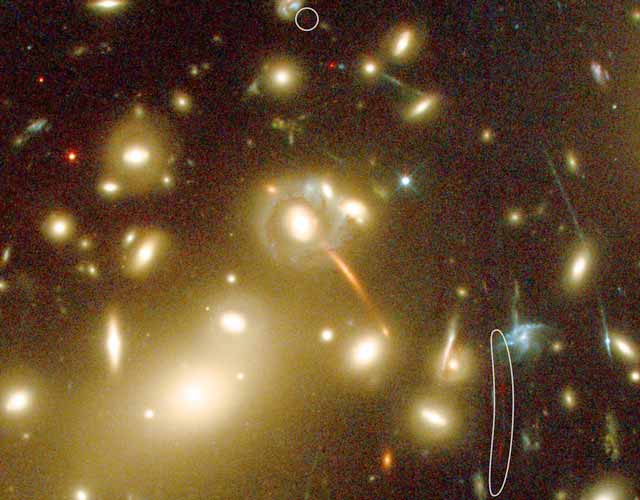FEBRUARY 17, 2004
Galaxy Cluster Lenses Farthest Known Galaxy
EXPLANATION
Gravity can bend light, allowing whole clusters of galaxies to act as huge telescopes. Almost all of the bright objects in this just-released Hubble Space Telescope image are galaxies in the cluster known as Abell 2218. The cluster is so massive and so compact that its gravity bends and focuses the light from galaxies that lie behind it. As a result, multiple images of these background galaxies are distorted into long faint arcs—a simple lensing effect analogous to viewing distant street lamps through a glass of wine. The cluster of galaxies Abell 2218 is itself about two billion light-years away in the northern constellation Draco. The power of this massive cluster telescope has recently allowed astronomers to detect a galaxy at a redshift of about 7, the most distant galaxy or quasar yet measured. Three images of this young, still-maturing galaxy are faintly visible in the white contours near the image top and the lower right. The recorded light, further analyzed with a Keck Telescope, left this galaxy when the universe was only about five percent of its current age.
Credit
ESA, NASA, J.-P. Kneib (Caltech/Observatoire Midi-Pyrenees) & R. Ellis (Caltech)


